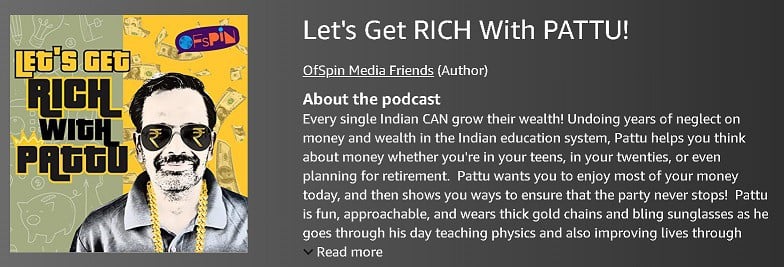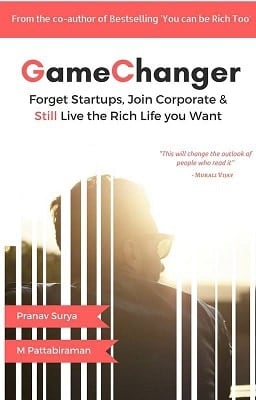Last Updated on August 30, 2021 at 3:34 pm
Many mutual fund SIP buyers and sellers incorrectly believe that SIP is a disciplined form of investing that reduces market risk because it averages the cost of purchase. In part 2 of “this is how a real market crash “feels” like“, let us travel with a SIP started ten years apart and see for ourselves how well they manage to reduce risk.
Let us stop and think for a moment how the SIP works. Equate your corpus to the water in a bucket. Initially, you have no wealth to speak of and the bucket is empty. Each month you receive a salary – say some amount of water in the salary bucket.
Each month, after the salary arrives, you take a mug, dip into the salary bucket and transfer it into the corpus bucket. Gradually the corpus bucket grows in size. Due to market forces, the corpus bucket can gain or lose some water over and above what has been filled in each month.
In an earlier post, we discussed why Do Stock Markets Crash? When both long-term and short-term investors think alike and withdraw from the market, it comes crashing down. If this happens tomorrow, what would happen to your corpus bucket?
Join 32,000+ readers and get free money management solutions delivered to your inbox! Subscribe to get posts via email! (Link takes you to our email sign-up form)
🔥Want to create a complete financial plan? Learn goal-based investing? Exclusive access to our DIY tools? Increase your income with your skills? Enjoy massive discounts on our robo-advisory tool & courses! 🔥
You can manually or automatically fill the corpus bucket with water, but that will not prevent the bucket itself from developing a leak or a huge crack.
Crude as it may be, this is what happens in an unmonitored SIP too. Sometimes the SIP may result in more fund units (when NAV is low) and sometimes lesser units. This is what the “averaging” refers to. How will this protect the corpus when the markets crash? A few months ago, I showed how a Rs. 500 a month SIP started about 7-8 years ago could be worth more than a lakh now. I find it amusing when investors worry about when to invest the next 500 (in the name of timing the market) instead of trying to safeguarding the one lakh accumulated.
That is enough ranting. Let me use the Franklin Prima Fund NAV history in combination with the Mutual Fund SIP XIRR Tracker to generate three SIP journeys:
A: 24-year SIP started in Dec. 1993
B: 14-year SIP started in Dec. 2003 (ten years later)
C: 4-year SIP started in Dec. 2013 (another ten years later)
The analysis was done on July 5th 2017 but is equally applicable if the market crashes now
A: 24-year SIP started in Dec. 1993
![]()
What you see above is the return (XIRR) after each SIP instalment starting from the 13th instalment (when SIP is one year old). The sharp hill around 2000 is the dot-com bubble and burst. As in part one, we shall consider the impact if a similar fall occurs today.
But first, let us look the actual history. Notice the huge swings in XIRR, gradually stabilising with time.
The 2000-crash occurred “only” 7 years after the SIP was started. (The mf industry definition of “long-term” depends on market conditions. In a bull run, it would say 1Y, in a bear market, it will quickly become 10+ years)
The 2008-crash was “only” 15 years after the SIP started, yet you can clearly spot it. This is what I referred to as a leaky bucket above. Kindly do not delude yourself saying, “even after 2008, the return fell only to ~16%”. All falls hurt, and we do not know how the next 24-25 years will pan out.
Now, let us simulate a 2000-like crash happening 24 years after the SIP started. There was a comment in the previous post that falls of such magnitude “will not occur today”. Excuse me for disagreeing – if we can start expecting and predicting market behaviour, then it will cease to be a “market” and so will our reward from it.
![]()
The blue dots represent the simulated returns. The inference is simple: Whether you are cooking a dish or running a SIP, you cannot afford to leave it unmonitored.
Mutual Fund SIPs do not Reduce Risk!
A 24-year SIP is a bit too extreme (also unrealistic- SIPs as we know today did not exist in the 90s – lot less noise). So let us move the clock by 10 years from 1993 to 2003.
B: 14-year SIP started in Dec. 2003 (ten years later)
![]()
A 14-year SIP, still long enough. Started just at the start of the bull run, the dramatic returns dropped soon and then came the crash. Five years after the SIP was started, the XIRR became 0%. This just means, the XIRR approximation algorithm (Newton-Raphson) cannot estimate a return.
Now, let us add the 2000-like crash.
![]()
If the markets went south, the return even after 14-15 years of “disciplined investing”, “holding through ups and downs”. the final return is equal to that of an SB account. Perhaps a good time to say a prayer – “Thank you God for making me financially literate and showing me that equity SIP is the best way to beat inflation over the long term”.
C: 4-year SIP started in Dec. 2013 (another ten years later)
This SIP journey is not of much relevance now, but for what it is worth this is the data.
![]()
The fate of this SIP when a “2000” occurs today, I leave to your imagination.
What is the solution?
Solution = risk management. Have covered this many times before:
Simple Steps to De-risk Your Investment Portfolio
How to systematically reduce the risk associated with a SIP
Managing Risk Without Stopping Mutual Fund SIPs
In addition to this, one could adopt a PE-based or daily moving averaging strategy to reduce risk. The problem starts when people start claiming that such methods can generate higher returns. That is hogwash – sometimes they do and sometimes they don’t, pretty much a coin toss – Is it possible to time the market?
The notion of staying invested through market ups and downs is a sound one, but investors should know when to stay invested and when to run for cover. Goal-based investing is a simple way to clarify this.
Beware of misinformation
Mutual Fund SIPs Do Not Reduce Risk!
Well, that is not true. They do reduce the risk of irregular income to mutual fund houses and their sales guys. In fact, a SIP pretty much guarantees it!
🔥Enjoy massive discounts on our courses, robo-advisory tool and exclusive investor circle! 🔥& join our community of 7000+ users!
Use our Robo-advisory Tool for a start-to-finish financial plan! ⇐ More than 2,500 investors and advisors use this!
Track your mutual funds and stock investments with this Google Sheet!
We also publish monthly equity mutual funds, debt and hybrid mutual funds, index funds and ETF screeners and momentum, low-volatility stock screeners.





- Do you have a comment about the above article? Reach out to us on Twitter: @freefincal or @pattufreefincal
- Have a question? Subscribe to our newsletter using the form below.
- Hit 'reply' to any email from us! We do not offer personalized investment advice. We can write a detailed article without mentioning your name if you have a generic question.
Join 32,000+ readers and get free money management solutions delivered to your inbox! Subscribe to get posts via email! (Link takes you to our email sign-up form)
About The Author
 Dr M. Pattabiraman(PhD) is the founder, managing editor and primary author of freefincal. He is an associate professor at the Indian Institute of Technology, Madras. He has over ten years of experience publishing news analysis, research and financial product development. Connect with him via Twitter(X), Linkedin, or YouTube. Pattabiraman has co-authored three print books: (1) You can be rich too with goal-based investing (CNBC TV18) for DIY investors. (2) Gamechanger for young earners. (3) Chinchu Gets a Superpower! for kids. He has also written seven other free e-books on various money management topics. He is a patron and co-founder of “Fee-only India,” an organisation promoting unbiased, commission-free investment advice.
Dr M. Pattabiraman(PhD) is the founder, managing editor and primary author of freefincal. He is an associate professor at the Indian Institute of Technology, Madras. He has over ten years of experience publishing news analysis, research and financial product development. Connect with him via Twitter(X), Linkedin, or YouTube. Pattabiraman has co-authored three print books: (1) You can be rich too with goal-based investing (CNBC TV18) for DIY investors. (2) Gamechanger for young earners. (3) Chinchu Gets a Superpower! for kids. He has also written seven other free e-books on various money management topics. He is a patron and co-founder of “Fee-only India,” an organisation promoting unbiased, commission-free investment advice.Our flagship course! Learn to manage your portfolio like a pro to achieve your goals regardless of market conditions! ⇐ More than 3,000 investors and advisors are part of our exclusive community! Get clarity on how to plan for your goals and achieve the necessary corpus no matter the market condition is!! Watch the first lecture for free! One-time payment! No recurring fees! Life-long access to videos! Reduce fear, uncertainty and doubt while investing! Learn how to plan for your goals before and after retirement with confidence.
Our new course! Increase your income by getting people to pay for your skills! ⇐ More than 700 salaried employees, entrepreneurs and financial advisors are part of our exclusive community! Learn how to get people to pay for your skills! Whether you are a professional or small business owner who wants more clients via online visibility or a salaried person wanting a side income or passive income, we will show you how to achieve this by showcasing your skills and building a community that trusts and pays you! (watch 1st lecture for free). One-time payment! No recurring fees! Life-long access to videos!
Our new book for kids: “Chinchu Gets a Superpower!” is now available!


Must-read book even for adults! This is something that every parent should teach their kids right from their young age. The importance of money management and decision making based on their wants and needs. Very nicely written in simple terms. - Arun.Buy the book: Chinchu gets a superpower for your child!
How to profit from content writing: Our new ebook is for those interested in getting side income via content writing. It is available at a 50% discount for Rs. 500 only!
Do you want to check if the market is overvalued or undervalued? Use our market valuation tool (it will work with any index!), or get the Tactical Buy/Sell timing tool!
We publish monthly mutual fund screeners and momentum, low-volatility stock screeners.
About freefincal & its content policy. Freefincal is a News Media Organization dedicated to providing original analysis, reports, reviews and insights on mutual funds, stocks, investing, retirement and personal finance developments. We do so without conflict of interest and bias. Follow us on Google News. Freefincal serves more than three million readers a year (5 million page views) with articles based only on factual information and detailed analysis by its authors. All statements made will be verified with credible and knowledgeable sources before publication. Freefincal does not publish paid articles, promotions, PR, satire or opinions without data. All opinions will be inferences backed by verifiable, reproducible evidence/data. Contact information: To get in touch, use this contact form. (Sponsored posts or paid collaborations will not be entertained.)
Connect with us on social media
- Twitter @freefincal
- Subscribe to our YouTube Videos
- Posts feed via Feedburner.
Our publications
You Can Be Rich Too with Goal-Based Investing
 Published by CNBC TV18, this book is meant to help you ask the right questions and seek the correct answers, and since it comes with nine online calculators, you can also create custom solutions for your lifestyle! Get it now.
Published by CNBC TV18, this book is meant to help you ask the right questions and seek the correct answers, and since it comes with nine online calculators, you can also create custom solutions for your lifestyle! Get it now.Gamechanger: Forget Startups, Join Corporate & Still Live the Rich Life You Want
 This book is meant for young earners to get their basics right from day one! It will also help you travel to exotic places at a low cost! Get it or gift it to a young earner.
This book is meant for young earners to get their basics right from day one! It will also help you travel to exotic places at a low cost! Get it or gift it to a young earner.Your Ultimate Guide to Travel
 This is an in-depth dive into vacation planning, finding cheap flights, budget accommodation, what to do when travelling, and how travelling slowly is better financially and psychologically, with links to the web pages and hand-holding at every step. Get the pdf for Rs 300 (instant download)
This is an in-depth dive into vacation planning, finding cheap flights, budget accommodation, what to do when travelling, and how travelling slowly is better financially and psychologically, with links to the web pages and hand-holding at every step. Get the pdf for Rs 300 (instant download)